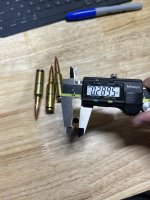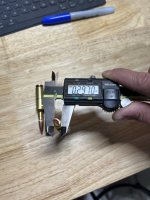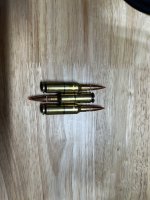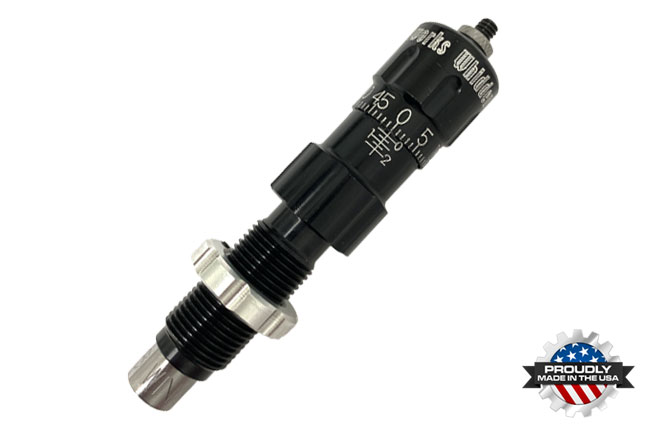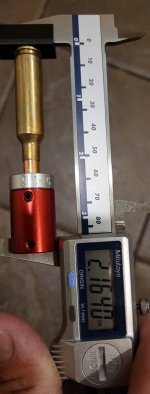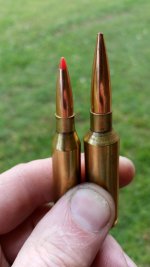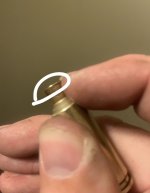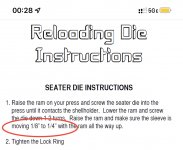I've been trying to help a friend who's rifle is having issues chambering some cartridges with resized brass. I've tried everything I can think of, so I'm turning to snipers hide to see if anyone else has any ideas I haven't yet tried. The cartridges are going 90% into the chamber and getting stuck. He made 100 cartridges all at the same time to the same specifications and around 50% of them would chamber and 50% of them would not.
A little details on the gun and bullets:
Tikka Action
Proof Carbon Barrel in 6.5 Creedmoor
Starline Brass
Hornady 120 Grain SST
At first I thought this was a simple case of not having enough shoulder bump, so I measured multiple pieces of fired brass compared to the ones that would not chamber. I was getting a measurement of 1.562 on fired brass and 1.552 on the brass that wouldn't chamber. So around 10 thou of shoulder bump, quite a lot, but as far as I know that shouldn't cause any issues chambering.
I also checked seating depth COAL to Ogive, first with a hornady modified case. I got a measurement of 2.257. The bullets that would not chamber were all around 2.227 so 30 thou of bullet jump.
I then tried pulling the bullet, powder and primer and chambering the brass only. The same brass that would not chamber, went in without issue. Then I re-seated the same bullet to the same seating depth( 2.227 COAL To Ogive) and it would not chamber. This made me think, its for sure the bullet. So I seated it back 10 thou to 2.217, it still didn't chamber, and again to 2.207, then 2.197. Still no luck no matter how deep it went.
Just to be safe I also checked the brass trim length every piece of brass I checked was 1.915 or shorter. Well below the maximum of 1.920
So what am I missing here? Any ideas would be appreciated, thanks!
A little details on the gun and bullets:
Tikka Action
Proof Carbon Barrel in 6.5 Creedmoor
Starline Brass
Hornady 120 Grain SST
At first I thought this was a simple case of not having enough shoulder bump, so I measured multiple pieces of fired brass compared to the ones that would not chamber. I was getting a measurement of 1.562 on fired brass and 1.552 on the brass that wouldn't chamber. So around 10 thou of shoulder bump, quite a lot, but as far as I know that shouldn't cause any issues chambering.
I also checked seating depth COAL to Ogive, first with a hornady modified case. I got a measurement of 2.257. The bullets that would not chamber were all around 2.227 so 30 thou of bullet jump.
I then tried pulling the bullet, powder and primer and chambering the brass only. The same brass that would not chamber, went in without issue. Then I re-seated the same bullet to the same seating depth( 2.227 COAL To Ogive) and it would not chamber. This made me think, its for sure the bullet. So I seated it back 10 thou to 2.217, it still didn't chamber, and again to 2.207, then 2.197. Still no luck no matter how deep it went.
Just to be safe I also checked the brass trim length every piece of brass I checked was 1.915 or shorter. Well below the maximum of 1.920
So what am I missing here? Any ideas would be appreciated, thanks!

